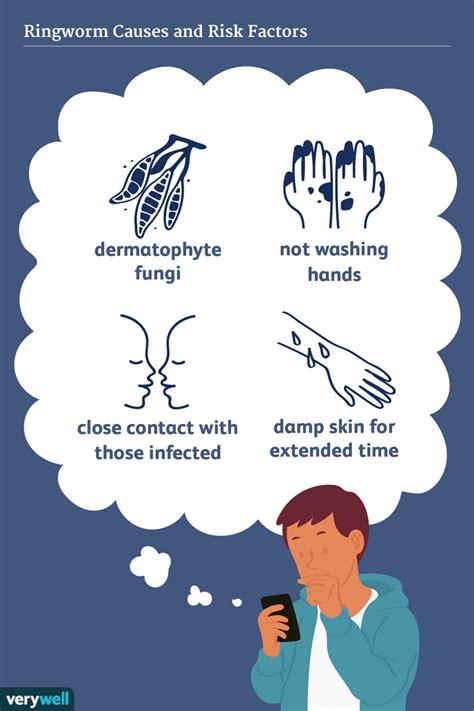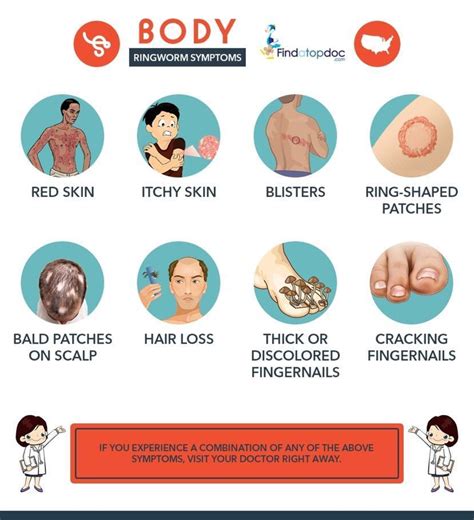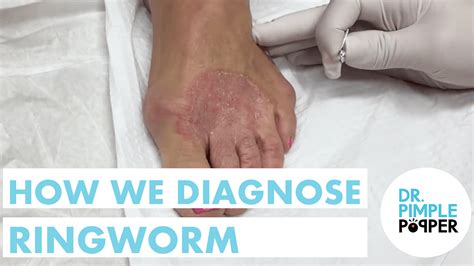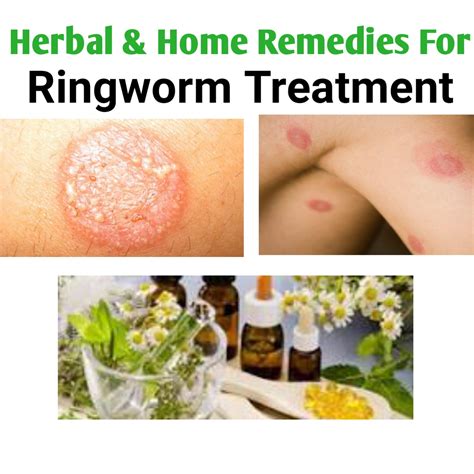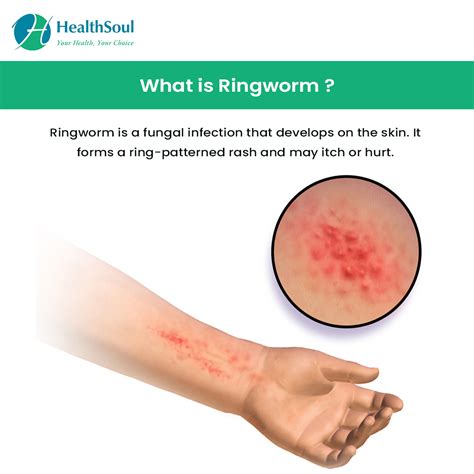Ringworm is a common fungal infection that affects millions of people worldwide. Despite its name, ringworm is not caused by a worm, but rather by a type of fungus that feeds on the keratin in skin, hair, and nails. The infection is highly contagious and can be spread through direct contact with an infected person or animal, or by touching contaminated objects. In this article, we will delve into the causes of ringworm, its symptoms, treatment options, and prevention methods.
Ringworm is caused by a group of fungi known as dermatophytes, which include species such as Trichophyton, Microsporum, and Epidermophyton. These fungi thrive in warm, moist environments and can be found in soil, on animals, and on human skin. When a person comes into contact with the fungus, it can infect the skin, causing a characteristic ring-shaped lesion. The lesion is usually red, itchy, and scaly, and can be painful to the touch.
Understanding Ringworm Infection
The infection can affect anyone, regardless of age or health status. However, certain groups of people are more susceptible to ringworm, including athletes, people who work with animals, and those with weakened immune systems. Ringworm can also be spread through indirect contact, such as sharing personal items like towels, combs, or clothing.
Risk Factors for Ringworm
Several factors can increase a person's risk of developing ringworm, including poor hygiene, sharing personal items, and participating in contact sports. People who work with animals, such as veterinarians, groomers, and farmers, are also at higher risk of contracting the infection. Additionally, people with certain medical conditions, such as diabetes, eczema, or psoriasis, may be more susceptible to ringworm due to their compromised immune systems.
Symptoms of Ringworm
The symptoms of ringworm can vary depending on the location and severity of the infection. Common symptoms include red, itchy, and scaly lesions, as well as hair loss and nail thickening. In some cases, the infection can cause a more severe reaction, including blistering, crusting, and swelling. If left untreated, ringworm can lead to complications such as bacterial infections, scarring, and permanent hair loss.
Diagnosing Ringworm
Diagnosing ringworm typically involves a physical examination and a review of the patient's medical history. A healthcare provider may also perform a skin scraping or biopsy to confirm the presence of the fungus. In some cases, a fungal culture may be necessary to identify the specific type of fungus causing the infection.
Treatment Options for Ringworm
Treatment for ringworm usually involves the use of antifungal medications, which can be applied topically or taken orally. Topical treatments, such as creams and ointments, are typically used for mild cases of ringworm, while oral medications are reserved for more severe infections. In addition to medication, it is essential to practice good hygiene and take steps to prevent the spread of the infection.
Prevention Methods
Preventing ringworm requires a combination of good hygiene practices, such as washing hands regularly, showering after exercise, and avoiding sharing personal items. It is also essential to wear protective clothing, such as long sleeves and pants, when working with animals or in environments where the fungus is common. Additionally, keeping the skin clean and dry, and avoiding excessive sweating, can help reduce the risk of developing ringworm.
Additional Prevention Tips
Some additional prevention tips include:
* Avoiding contact with infected animals or people
* Not sharing personal items, such as towels or combs
* Wearing sandals or shoes in public showers or pools
* Keeping the skin clean and dry
* Avoiding excessive sweating
Complications of Ringworm
If left untreated, ringworm can lead to complications such as bacterial infections, scarring, and permanent hair loss. In rare cases, the infection can spread to other parts of the body, such as the eyes, brain, or spinal cord, causing more severe symptoms. It is essential to seek medical attention if symptoms persist or worsen over time.
Home Remedies for Ringworm
While home remedies should not replace medical treatment, some natural remedies may help alleviate symptoms and support the healing process. These include applying tea tree oil, coconut oil, or aloe vera gel to the affected area, as well as taking supplements such as vitamin E or zinc.
Conclusion and Final Thoughts
In conclusion, ringworm is a common fungal infection that can be treated and prevented with the right measures. By understanding the causes, symptoms, and treatment options for ringworm, individuals can take steps to protect themselves and their loved ones from this highly contagious infection. Remember to practice good hygiene, avoid sharing personal items, and seek medical attention if symptoms persist or worsen over time.
We invite you to share your thoughts and experiences with ringworm in the comments section below. Have you or someone you know been affected by this infection? What steps have you taken to prevent or treat ringworm? Your feedback and insights can help others better understand and manage this common fungal infection.
What is the most common cause of ringworm?
+
Ringworm is most commonly caused by a group of fungi known as dermatophytes, which include species such as Trichophyton, Microsporum, and Epidermophyton.
Can ringworm be spread through indirect contact?
+
Yes, ringworm can be spread through indirect contact, such as sharing personal items like towels, combs, or clothing, or by touching contaminated objects.
What are the most common symptoms of ringworm?
+
The most common symptoms of ringworm include red, itchy, and scaly lesions, as well as hair loss and nail thickening.
Can ringworm be treated with home remedies?
+
While home remedies should not replace medical treatment, some natural remedies may help alleviate symptoms and support the healing process. These include applying tea tree oil, coconut oil, or aloe vera gel to the affected area.
How can I prevent ringworm?
+
Preventing ringworm requires a combination of good hygiene practices, such as washing hands regularly, showering after exercise, and avoiding sharing personal items. It is also essential to wear protective clothing and keep the skin clean and dry.

